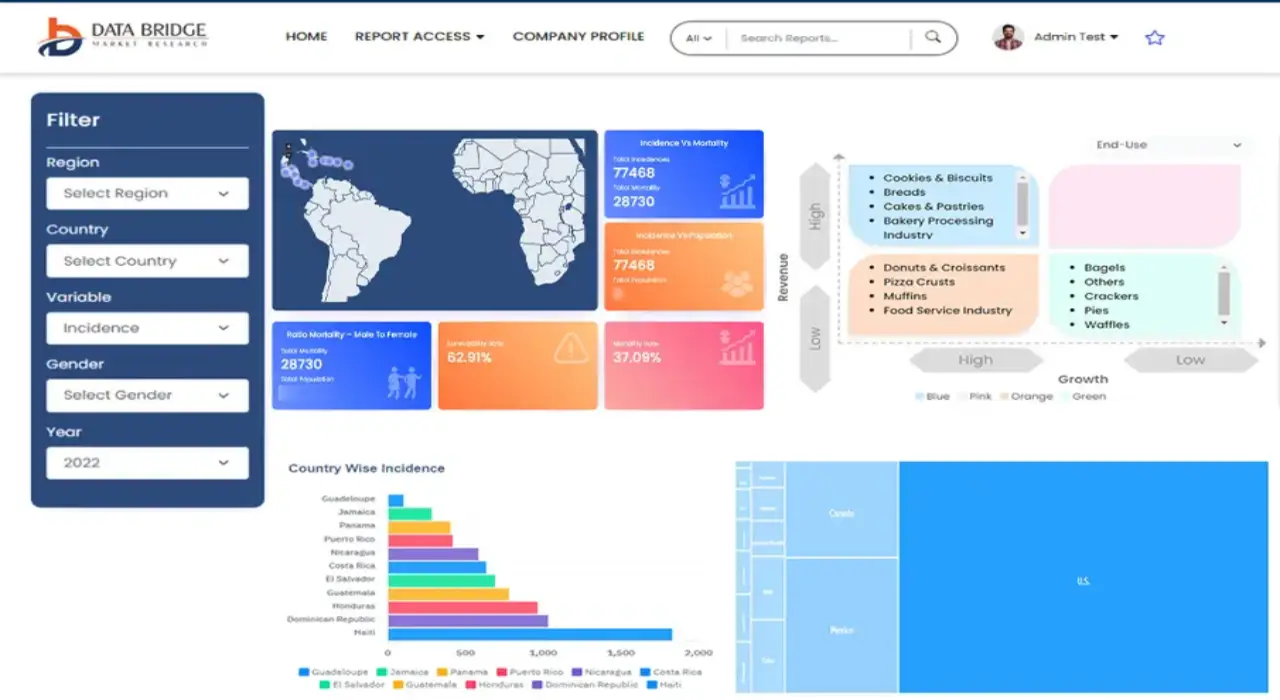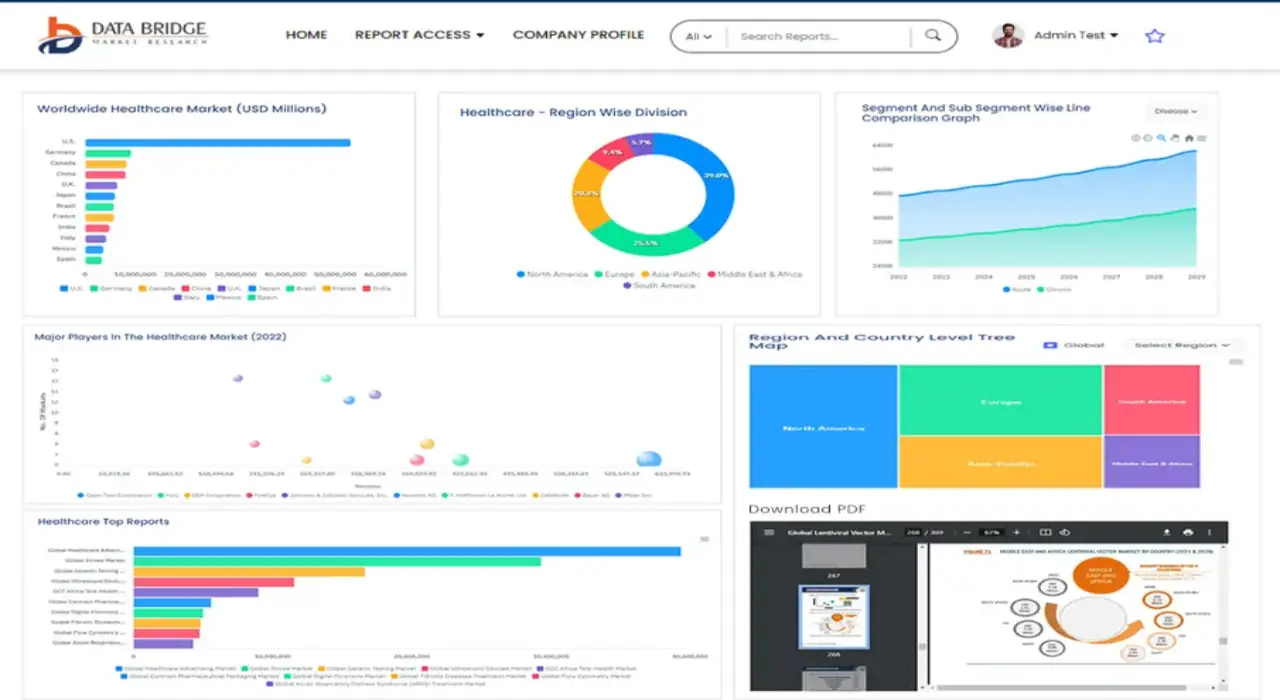Global Next Gen Robotic Surgical Systems Market
시장 규모 (USD 10억)
연평균 성장률 :
% 
 USD
4.80 Billion
USD
35.07 Billion
2024
2032
USD
4.80 Billion
USD
35.07 Billion
2024
2032
| 2025 –2032 | |
| USD 4.80 Billion | |
| USD 35.07 Billion | |
|
|
|
>Global Next-Gen Robotic Surgical Systems Market Segmentation, By Product Type (Robotic Surgical Systems, Instruments and Accessories, Services), Application (General Surgery, Orthopedic Surgery, Gynaecological Surgery, Urological Surgery, Cardiothoracic Surgery, Neurosurgery, Pediatric Surgery, Others), Technology (Telerobotics, Artificial Intelligence (AI)-Enabled Systems, Virtual Reality (VR)-Assisted Systems, Haptics-Integrated Systems), End User (Hospitals, Ambulatory Surgical Centers, Specialty Clinics) – Industry Trends and Forecast to 2032
Next-Gen Robotic Surgical Systems Market Analysis
The global next-gen robotic surgical systems market is driven by the increasing prevalence of chronic diseases and rising demand for minimally invasive surgeries. According to the World Health Organization (WHO), over 1.71 billion people worldwide are affected by musculoskeletal conditions, many of which require surgical intervention. Additionally, the American Cancer Society reports that approximately 1.96 million new cancer cases were diagnosed in the U.S. in 2023, fueling demand for precision-driven surgical technologies, particularly in oncology. Robotic systems are increasingly utilized in procedures such as prostatectomies and hysterectomies, with studies showing that robotic-assisted surgeries reduce hospital stays by 20–25% compared to traditional open surgeries, enhancing recovery times and patient outcomes. With advancements in AI integration and haptic feedback, these systems are poised to address the growing surgical demand in aging populations and regions with high disease prevalence.
Next-Gen Robotic Surgical Systems Market Size
Global next-gen robotic surgical systems market size was valued at USD 4.80 billion in 2024 and is projected to reach USD 35.07 billion by 2032, with a CAGR of 28.20% during the forecast period of 2025 to 2032. In addition to the insights on market scenarios such as market value, growth rate, segmentation, geographical coverage, and major players, the market reports curated by the Data Bridge Market Research also include depth expert analysis, patient epidemiology, pipeline analysis, pricing analysis, and regulatory framework.
Next-Gen Robotic Surgical Systems Market Trends
“Shift Towards Single-Port Robotic Systems”
Single-port robotic systems represent a significant advancement in robotic surgery by enabling complex procedures through a single, small incision. This approach reduces the physical trauma associated with multiple incisions, potentially leading to less scarring, reduced post-operative pain, and quicker recovery times. These systems incorporate advanced articulation and miniaturization technologies to enhance precision and flexibility within confined spaces, making them particularly suitable for delicate surgeries in areas such as urology, gynecology, and general surgery. The growing focus on improving patient outcomes and optimizing surgical techniques has positioned single-port systems as a focal point for innovation in robotic-assisted procedures.
Report Scope and Global Next-Gen Robotic Surgical Systems Market Segmentation
|
Attributes |
Next-Gen Robotic Surgical Systems Key Market Insights |
|
Segments Covered |
|
|
Countries Covered |
U.S., Canada, Mexico, Germany, France, U.K., Netherlands, Switzerland, Belgium, Russia, Italy, Spain, Turkey, Rest of Europe, China, Japan, India, South Korea, Singapore, Malaysia, Australia, Thailand, Indonesia, Philippines, Rest of Asia-Pacific, Saudi Arabia, U.A.E., South Africa, Egypt, Israel, Rest of Middle East and Africa, Brazil, Argentina, Rest of South America |
|
Key Market Players |
Intuitive Surgical, Inc. (U.S.), Medtronic (Ireland), Stryker Corporation (U.S.), Johnson & Johnson Services, Inc. (U.S.), Zimmer Biomet Holdings, Inc. (U.S.), Smith+Nephew (U.K.), Siemens Healthineers AG (Germany), Asensus Surgical, Inc. (U.S.), CMR Surgical Ltd. (U.K.), Globus Medical, Inc. (U.S.), KUKA AG (Germany), Think Surgical, Inc. (U.S.), Titan Medical Inc. (Canada), Renishaw plc (U.K.), Avateramedical GmbH (Germany), OMNIlife Science, Inc. (U.S.), MicroPort Scientific Corporation (China), among others. |
|
Market Opportunities |
|
|
Value Added Data Infosets |
In addition to the insights on market scenarios such as market value, growth rate, segmentation, geographical coverage, and major players, the market reports curated by the Data Bridge Market Research also include depth expert analysis, patient epidemiology, pipeline analysis, pricing analysis, and regulatory framework. |
Next-Gen Robotic Surgical Systems Market Definition
Next-gen robotic surgical systems are advanced robotic platforms designed to assist surgeons in performing complex surgical procedures with enhanced precision, flexibility, and control. These systems integrate cutting-edge technologies such as artificial intelligence, machine learning, haptic feedback, augmented reality, and advanced imaging to improve surgical outcomes, minimize invasiveness, and reduce recovery times for patients. They represent a significant evolution from traditional robotic systems, offering features like single-port access, remote operation, and improved ergonomics for a wide range of surgical applications.
Next-Gen Robotic Surgical Systems Market Dynamics
Drivers
- Increasing Prevalence of Chronic Diseases
The global rise in chronic diseases, including cancer, cardiovascular conditions, and obesity-related ailments, is significantly increasing the demand for surgical interventions. According to the World Health Organization (WHO), cardiovascular diseases account for nearly 17.9 million deaths annually, while the International Agency for Research on Cancer (IARC) estimates 19.3 million new cancer cases globally each year. Such conditions often require precise and complex surgical treatments. Robotic surgical systems are gaining preference in procedures like prostatectomies, hysterectomies, and coronary bypass surgeries due to their ability to offer enhanced precision, reduced tissue trauma, and minimal invasiveness compared to traditional approaches. These systems improve surgical outcomes, reduce post-operative complications, and shorten recovery times, making them a vital tool in managing chronic conditions effectively.
The increasing prevalence of chronic diseases underscores the need for advanced surgical technologies, positioning next-gen robotic systems as indispensable in modern healthcare.
- Technological Advancements in Robotic Systems
The rapid evolution of technology is revolutionizing robotic surgical systems, making them more accurate, efficient, and safe. Innovations like artificial intelligence (AI) and machine learning (ML) allow these systems to analyze complex surgical scenarios in real-time, assisting surgeons with precision-based decision-making. Features such as 3D visualization provide enhanced anatomical clarity, enabling better planning and execution of intricate procedures. Haptic feedback improves tactile awareness during surgeries, offering surgeons a greater sense of control and reducing the likelihood of errors. Single-port access systems further minimize invasiveness by allowing multiple instruments to be used through a single incision, enhancing patient outcomes. Additionally, telerobotic surgery and real-time data integration facilitate remote operations and seamless information sharing, broadening the scope of robotic surgery in underserved regions.
Technological advancements in robotic systems are reshaping surgical care by improving precision and accessibility, solidifying their role as a cornerstone of modern surgical practices.
Opportunities
- Integration with Artificial Intelligence (AI) and Machine Learning (ML)
The integration of AI and ML into next-gen robotic surgical systems presents a transformative opportunity for the healthcare industry. AI enables robotic systems to analyze large volumes of surgical data, offering predictive analytics that can help anticipate complications and optimize surgical strategies in real-time. Machine learning algorithms allow robots to continually improve their performance by learning from past surgeries, leading to more accurate, efficient, and safer procedures. Additionally, AI can personalize surgery planning by tailoring approaches to individual patients, enhancing treatment outcomes. Real-time decision support powered by AI provides surgeons with insights during operations, reducing human error and enhancing the precision of complex procedures. As AI and ML capabilities advance, the potential for these systems to revolutionize surgical practices across various medical fields, such as oncology, orthopedics, and cardiovascular surgery, becomes more tangible, driving broader adoption and market expansion.
AI and ML integration is a game-changer for robotic surgical systems, positioning them as a central component in the future of surgery, promising enhanced precision, efficiency, and safety in patient care.
- Increased Adoption of Robotic Systems in Outpatient Surgery Centers
The growing shift toward outpatient surgery centers, driven by the demand for cost-effective, efficient, and patient-friendly surgical options, creates a significant opportunity for next-gen robotic surgical systems. These centers, which perform a range of minimally invasive procedures, align perfectly with the capabilities of robotic systems. These systems offer reduced recovery times, enhanced precision, and lower complication rates, making them ideal for outpatient settings where patient turnover and efficiency are critical. With the increasing focus on outpatient care, robotic systems can streamline surgical processes, improve patient outcomes, and reduce the overall cost of care. This trend is especially pronounced in regions where healthcare infrastructure is rapidly expanding, creating a new revenue stream for robotic system manufacturers. The demand for high-quality, minimally invasive surgical options in outpatient centers is expected to continue to rise, positioning robotic systems as a valuable tool in this evolving healthcare landscape.
The increased adoption of robotic systems in outpatient surgery centers offers a unique growth opportunity for manufacturers, as these centers prioritize efficiency, minimal invasiveness, and patient satisfaction, driving the demand for advanced robotic solutions.
Restraints/Challenges
- High Cost of Robotic Surgical Systems
The high cost of robotic surgical systems is a significant restraint in the next-gen robotic surgical systems market. the initial investment required to purchase, install, and maintain these systems can be prohibitively expensive, particularly for smaller healthcare facilities and outpatient centers with limited budgets. In addition to the purchase cost, ongoing maintenance, software updates, and specialized training for medical staff further add to the financial burden. Many hospitals, especially in developing regions, may find it challenging to justify such large capital expenditures, even with the potential for long-term savings and improved patient outcomes. This cost barrier can limit the widespread adoption of robotic surgical systems, restricting access to advanced surgical options in areas with constrained healthcare resources.
While robotic surgical systems offer numerous benefits, the high upfront cost remains a critical restraint that limits their adoption, particularly in smaller healthcare facilities and emerging markets.
- Lack of Skilled Surgeons and Operators
A significant challenge in the market is the shortage of skilled surgeons and operators trained to use these advanced systems effectively. Robotic surgery involves complex procedures that require specialized knowledge, and as technology advances, the demand for highly skilled professionals grows. While training programs are expanding, there is still a gap in the availability of qualified surgeons, particularly in underserved regions with limited access to advanced medical education and infrastructure. This shortage can slow the adoption of robotic systems and impact their efficiency, as inexperienced operators may face longer procedure times and increased risk during surgeries. The learning curve associated with these systems further complicates the situation, potentially leading to suboptimal outcomes in the early stages of adoption. As a result, ensuring proper training and skill development is essential for maximizing the benefits of robotic surgery.
The shortage of skilled surgeons and operators presents a major challenge, potentially limiting the full potential and widespread adoption of robotic surgical systems, especially in regions with fewer educational resources and healthcare professionals.
Next-Gen Robotic Surgical Systems Market Scope
The market is segmented on the basis of product type, application, technology, and end user. The growth amongst these segments will help you analyze meagre growth segments in the industries and provide the users with a valuable market overview and market insights to help them make strategic decisions for identifying core market applications.
Product Type
- Robotic Surgical Systems
- Instruments and Accessories
- Services
Application
- General Surgery
- Orthopedic Surgery
- Gynaecological Surgery
- Urological Surgery
- Cardiothoracic Surgery
- Neurosurgery
- Pediatric Surgery
- Others
Technology
- Telerobotics
- Artificial Intelligence (AI)-Enabled Systems
- Virtual Reality (VR)-Assisted Systems
- Haptics-Integrated Systems
End User
- Hospitals
- Ambulatory Surgical Centers
- Specialty Clinics
Next-Gen Robotic Surgical Systems Market Regional Analysis
The market is analyzed and market size insights and trends are provided by country, product type, application, technology, and end user as referenced above.
The countries covered in the market are U.S., Canada, Mexico, Germany, France, U.K., Netherlands, Switzerland, Belgium, Russia, Italy, Spain, Turkey, rest of Europe, China, Japan, India, South Korea, Singapore, Malaysia, Australia, Thailand, Indonesia, Philippines, rest of Asia-Pacific, Saudi Arabia, U.A.E., South Africa, Egypt, Israel, rest of Middle East and Africa, Brazil, Argentina, and rest of South America.
North America is expected to dominate the market due to its well-established healthcare infrastructure, high healthcare spending, and early adoption of advanced technologies. The region benefits from a strong presence of key market players, ongoing investments in research and development, and a favorable regulatory environment that accelerates the approval and implementation of robotic systems.
Asia-Pacific is expected to be the fastest-growing due to rapid advancements in healthcare infrastructure, increasing healthcare expenditure, and a rising demand for minimally invasive surgeries. Additionally, the growing aging population and the expansion of medical tourism in countries like India and China are further driving the adoption of advanced surgical technologies in the region.
The country section of the report also provides individual market impacting factors and changes in regulation in the market domestically that impacts the current and future trends of the market. Data points like down-stream and upstream value chain analysis, technical trends and porter's five forces analysis, case studies are some of the pointers used to forecast the market scenario for individual countries. Also, the presence and availability of global brands and their challenges faced due to large or scarce competition from local and domestic brands, impact of domestic tariffs and trade routes are considered while providing forecast analysis of the country data.
Next-Gen Robotic Surgical Systems Market Share
The market competitive landscape provides details by competitor. Details included are company overview, company financials, revenue generated, market potential, investment in research and development, new market initiatives, global presence, production sites and facilities, production capacities, company strengths and weaknesses, product launch, product width and breadth, application dominance. The above data points provided are only related to the companies' focus related to market.
Next-Gen Robotic Surgical Systems Market Leaders Operating in the Market Are:
- Intuitive Surgical, Inc. (U.S.)
- Medtronic (Ireland)
- Stryker Corporation (U.S.)
- Johnson & Johnson Services, Inc. (U.S.)
- Zimmer Biomet Holdings, Inc. (U.S.)
- Smith+Nephew (U.K.)
- Siemens Healthineers AG (Germany)
- Asensus Surgical, Inc. (U.S.)
- CMR Surgical Ltd. (U.K.)
- Globus Medical, Inc. (U.S.)
- KUKA AG (Germany)
- Think Surgical, Inc. (U.S.)
- Titan Medical Inc. (Canada)
- Renishaw plc (U.K.)
- Avateramedical GmbH (Germany)
- OMNIlife Science, Inc. (U.S.)
- MicroPort Scientific Corporation (China)
Latest Developments in Next-Gen Robotic Surgical Systems Market
- In October 2024, CMR Surgical Ltd. has received FDA marketing authorization for the Versius Surgical System, enabling the launch of this next-generation, versatile, and digitally-driven surgical robot in the U.S. This approval will help CMR Surgical expand its market presence and tap into the growing demand for advanced robotic surgery solutions in the U.S. healthcare market
- In September 2024, ZEISS Group has launched the KINEVO 900 S, an advanced version of the KINEVO 900 platform, featuring enhanced digital visualization, collaborative assistant functions, and connected intelligence. This innovation provides greater clarity for complex neurosurgeries and other procedures, helping ZEISS strengthen its position in the robotic surgical systems market and meet growing demand for advanced surgical technologies
- In August 2024, Vicarious Surgical has formed a strategic development partnership with LSU Health New Orleans to advance its surgical robot. This collaboration will help Vicarious Surgical enhance its technology and expand its presence in the healthcare sector
- In August 2024, Johnson & Johnson MedTech’s DePuy Synthes, in collaboration with eCential Robotics, has launched the VELYS Active Robotic-Assisted System (VELYS SPINE) for spinal fusion procedures, following FDA 510(k) clearance. This system will strengthen the company’s position in the spinal surgery market by offering advanced robotic and navigation capabilities for improved surgical precision
- In April 2024, BlackBerry has partnered with AMD to develop a new generation of robotics systems, aimed at transforming the industrial and healthcare sectors with real-time performance, low latency, and scalability. This collaboration will enhance BlackBerry’s position in the robotics market by combining its expertise in secure software with AMD's advanced hardware technologies
- In April 2024, innovative Medical Products, Inc. (IMP) has formed a global strategic partnership with Curexo Inc. to combine Curexo’s CUVIS-joint surgical robot with IMP’s De Mayo D2 Knee Positioner. This collaboration will enhance both companies' offerings in orthopedic surgery, driving innovation and expanding their market reach
SKU-
세계 최초의 시장 정보 클라우드 보고서에 온라인으로 접속하세요
- 대화형 데이터 분석 대시보드
- 높은 성장 잠재력 기회를 위한 회사 분석 대시보드
- 사용자 정의 및 질의를 위한 리서치 분석가 액세스
- 대화형 대시보드를 통한 경쟁자 분석
- 최신 뉴스, 업데이트 및 추세 분석
- 포괄적인 경쟁자 추적을 위한 벤치마크 분석의 힘 활용
연구 방법론
데이터 수집 및 기준 연도 분석은 대규모 샘플 크기의 데이터 수집 모듈을 사용하여 수행됩니다. 이 단계에는 다양한 소스와 전략을 통해 시장 정보 또는 관련 데이터를 얻는 것이 포함됩니다. 여기에는 과거에 수집한 모든 데이터를 미리 검토하고 계획하는 것이 포함됩니다. 또한 다양한 정보 소스에서 발견되는 정보 불일치를 검토하는 것도 포함됩니다. 시장 데이터는 시장 통계 및 일관된 모델을 사용하여 분석하고 추정합니다. 또한 시장 점유율 분석 및 주요 추세 분석은 시장 보고서의 주요 성공 요인입니다. 자세한 내용은 분석가에게 전화를 요청하거나 문의 사항을 드롭하세요.
DBMR 연구팀에서 사용하는 주요 연구 방법론은 데이터 마이닝, 시장에 대한 데이터 변수의 영향 분석 및 주요(산업 전문가) 검증을 포함하는 데이터 삼각 측량입니다. 데이터 모델에는 공급업체 포지셔닝 그리드, 시장 타임라인 분석, 시장 개요 및 가이드, 회사 포지셔닝 그리드, 특허 분석, 가격 분석, 회사 시장 점유율 분석, 측정 기준, 글로벌 대 지역 및 공급업체 점유율 분석이 포함됩니다. 연구 방법론에 대해 자세히 알아보려면 문의를 통해 업계 전문가에게 문의하세요.
사용자 정의 가능
Data Bridge Market Research는 고급 형성 연구 분야의 선두 주자입니다. 저희는 기존 및 신규 고객에게 목표에 맞는 데이터와 분석을 제공하는 데 자부심을 느낍니다. 보고서는 추가 국가에 대한 시장 이해(국가 목록 요청), 임상 시험 결과 데이터, 문헌 검토, 재생 시장 및 제품 기반 분석을 포함하도록 사용자 정의할 수 있습니다. 기술 기반 분석에서 시장 포트폴리오 전략에 이르기까지 타겟 경쟁업체의 시장 분석을 분석할 수 있습니다. 귀하가 원하는 형식과 데이터 스타일로 필요한 만큼 많은 경쟁자를 추가할 수 있습니다. 저희 분석가 팀은 또한 원시 엑셀 파일 피벗 테이블(팩트북)로 데이터를 제공하거나 보고서에서 사용 가능한 데이터 세트에서 프레젠테이션을 만드는 데 도움을 줄 수 있습니다.















